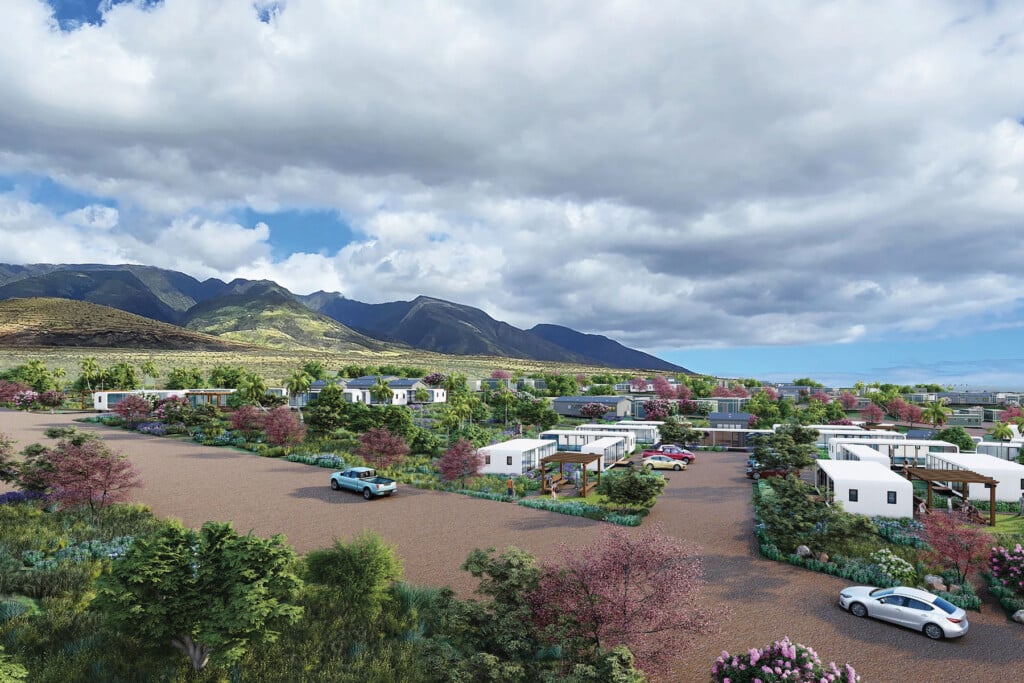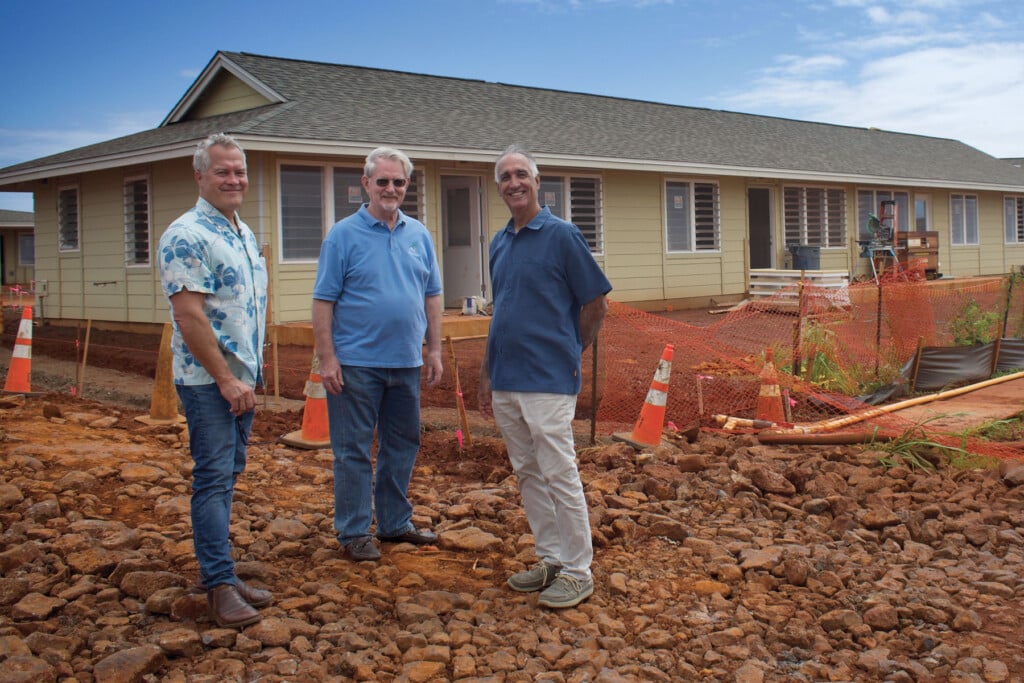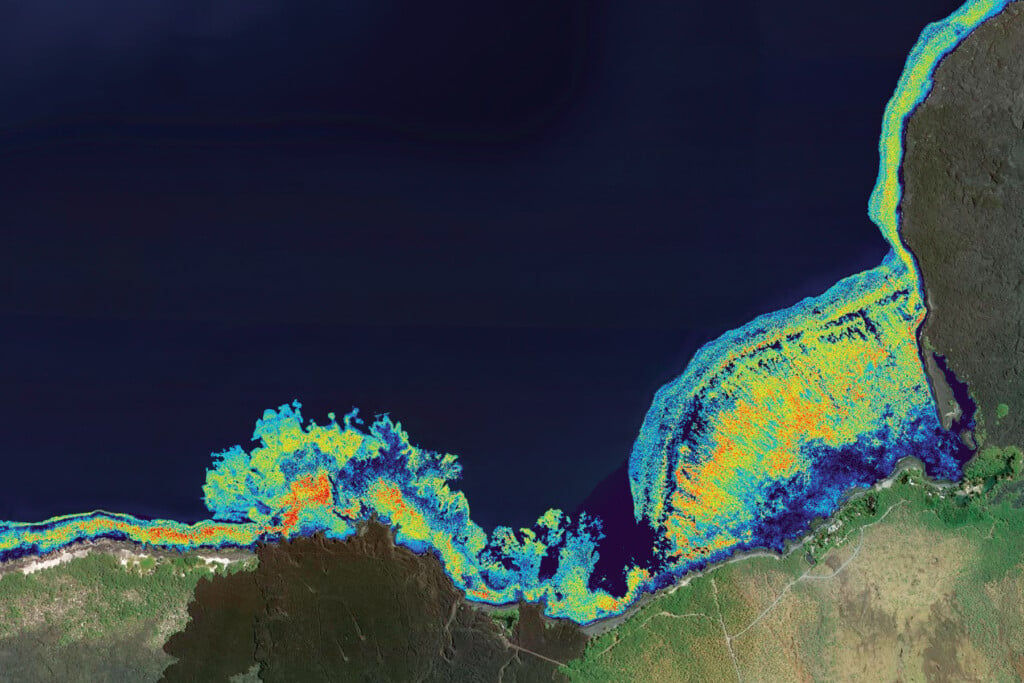Could a Local Building Collapse Like the One in Florida?
Experts say what happened at the Surfside condo is unlikely to happen here. But they warn condo boards: put off maintenance projects and you’ll end up paying far more.

A deadly building collapse like what occurred a year ago at a condo in Surfside, Florida, is unlikely to happen here so long as building owners and associations perform proper maintenance, say local construction experts.
Ninety-eight people died when part of the 12-story Champlain Towers South collapsed on June 24, 2021. The building had a history of maintenance problems, and concerns had been raised about its original design and construction quality. The National Institute of Standards and Technology, a federal agency, is leading the investigation into the cause of the collapse, and a conclusion is likely still at least a year away.
“Don’t look at that type of an isolated event and panic,” says Richard Furst, a Honolulu-based architect and associate principal with Wiss, Janney, Elstner Associates Inc. WJE has offices across the country, and some of Furst’s mainland colleagues are involved in the federal probe.
Instead, he says, the Florida incident underscores the importance of maintaining concrete structures in Hawai‘i, where the degradation of building materials is sped up by exposure to sun, salt and water. “Do as much as you can along the way to maintain your buildings in excellent condition, keep water out of the assembly, and then ‘ask’ the structure” what it needs, Furst says. “Take an individual look at your particular building, evaluate the existing conditions with the help of a qualified professional architect or engineer, determine what work needs to occur in the near-term, medium-term and longer-term … and then work with the property manager to develop appropriate capital improvement budgets to address those needs.”
Structural Integrity
Steve Baldridge, president of Baldridge & Associates Structural Engineering, says several factors likely contributed to the collapse of the 40-year-old Champlain Towers South. His firm has offices in Honolulu, Chicago, Florida, Guam and India, and he conducted analyses on the Surfside building after it collapsed. He wasn’t contracted by NIST and was instead just curious about the building, but he did send his results to the federal agency.
He noticed issues with the Surfside building’s tower and ground floor deck. For example, the columns supporting the ground floor deck were small and although they were probably big enough to carry the floor’s weight at first, the heavy finishes added later may have overstressed it. The slab-to-supporting-column connection point is critical and if it’s overstressed, “punching shear failure” can occur, where the column punches through the slab. That’s a catastrophic failure and can happen quickly, without warning, he says.
“There were some columns that appeared to be over-reinforced and highly stressed and others very slender,” he says. “For tower columns in the area where there was punching shear failures, they would be at risk of buckling failure, bending at the location where the original ground floor deck would have braced them.”
His analysis was based on the building’s permit plans and photos. Those plans provided him with things like the slab thickness and strength of the concrete, but he doesn’t know if the building was constructed entirely according to those plans. In the plans, the slab was thinner on the perimeter than in the center.
It’s hard to say where the failure started, he says, adding that many people are pointing to the pool deck. He thinks several issues contributed to the Champlain Towers South collapse, including shoddy construction, old building codes, design issues and not doing maintenance when there were early warning signs of structural issues.
“Whatever triggered the collapse may have been the proverbial straw that broke the camel’s back,” he says. “It will take some time to determine what may have happened but there will likely be many factors in play, some of which would hopefully be mostly unique to this particular building and not a larger inventory of existing buildings.”
Responsible For Maintaining Buildings
In Hawai‘i, condo associations are required by state law to set aside money to fund the repair and replacement of shared building components. These reserves are built up through monthly maintenance fees paid by unit owners.
Condo associations are also required to conduct reserve studies that list their buildings’ components, how long each can be used, and the estimated costs to repair and replace each. Jane Sugimura, president of the Hawaii Council of Community Associations, says the reserve study is a tool that helps boards plan for projects like fixing cracks in concrete walls, repainting buildings, installing new roofs and replacing pipes. The idea is that if they do a good job planning and saving enough reserves, they won’t have to get loans or charge their owners one-time special assessments to pay for projects.
She adds that state law also allows condo boards to mandate that repairs be done, even if the board must get a loan or charge owners a special assessment to pay for them.
“We are required under our statute to do so, otherwise it’s a breach of our fiduciary duty,” she says. “We are tasked to maintain and repair the building. And that means we have to hire resources to help us, we have to hire somebody to do the reserve study, we have to hire engineers and professionals to explain to us what steps have to be taken to properly maintain and repair the building, and we then have to engage in those repairs or replacements. And hopefully we planned correctly, and we have money in our reserves so that we don’t have to do a special assessment.”
Furst has been involved in projects to repair or replace pipes, concrete spall, guardrails, windows, sealants, exterior coatings and roofing assemblies. He says it’s integral that condo boards work with qualified consultants, like architects or engineers, to conduct buildingwide condition assessments. This will help condo boards get an accurate picture of the condition of their buildings’ components and systems, identify problems, and receive accurate estimates of the components’ remaining service life and maintenance requirements.
Hawai‘i strengthened its reserves law this past legislative session. Beginning in January 2023, reserve studies must be based on 30-year projections, and associations will need to review or update their studies at least every three years.
Currently, only 20-year projections are called for, and there’s no requirement for how often studies must be updated or reviewed. Sugimura says the update to the law was spurred by the Surfside condo collapse and that some local condos haven’t updated their reserve studies for 10 or 15 years. Even studies done before the pandemic are useless now, she says, as construction costs have increased due to supply chain issues.
“We (condo boards) are required under our statute to (make repairs), otherwise it’s a breach of our fiduciary duty. we are tasked to maintain and repair the building.”
– Jane Sugimura, President, Hawaii Council of Community Associations
Concrete Issues
Age and weather contribute to a condominium’s maintenance needs. Many of Hawai‘i’s condominiums were built in the 1960s, ’70s and ’80s and will soon need major improvements. And their proximity to the ocean means that salt air can more quickly degrade building materials like concrete, alu-minum windows, steel, paint, exposed roofing and waterproofing systems.
“It’s the fact we have got tons of sunshine, we’ve got salt air, we’ve got trade winds blowing that salt air through our buildings,” Furst says. “But also, the fact that we do have a lot of older buildings that may have not been as well maintained over the course of their life span and just like with our bodies, if we don’t take care of our bodies over the course of time, as we get older, we get more health problems.”
Complex interactions occur between the exterior environment and the various elements that make up a building. And some of those interactions happen subsurface, such as concrete spalling, which is “extremely difficult” to visually assess, Furst says.
Concrete spall is typically confirmed by dragging a metal implement, such as a hammer, across the concrete surface. Spalled concrete generally sounds hollow, rather than solid. But it’s diffi cult to accurately gauge the amount of concrete spall or delamination that has occurred, he says.
Concrete delamination is a precursor to spall and appears as fracturing in the concrete. It occurs when chloride containing moisture gets into the porous concrete and causes the steel inside to corrode, scale and rust. That scale and rust expands the surface volume of the steel reinforcement and puts pressure on the surrounding concrete and weakens it.
“As that cracking turns into delamination, those forces increase, more moisture gets in through the cracks in the surface concrete. That exacerbates the problem, and it just gets worse and worse until finally at a certain point you actually have spalling where chunk of concrete or chip will completely become debonded from the surrounding area,” Furst says. “And it can be just loose but still held in place, or it can actually become dislodged and fall off the building.”
Water And Concrete
Water can be especially damaging, Furst says. And once a building starts to see severe cracking or spalling, it means the problem has progressed beyond just infi ltration of water.
“You actually have degradation of the building structure occurring,” he says. “At that point, it’s time to take action.”
Slow-draining horizontal surfaces are more susceptible to water infiltration. He says one indication that water is making its way into the structure is when you see efflorescence or salt deposits on the underside of a pool, recreation or parking structure deck.
Other indicators that moisture has infiltrated the building structure are staining and paint blistering or other finish degradation on the underside of concrete structures. “Those are the types of things that visually you can start to say, ‘Hey, this is an early warning sign. We need to take a look at what’s going on and take some action.”
It’s in a condo board’s best interest to address those warning signs as soon as they see them because the cost of repairs goes up the longer you wait, Furst says.
Fixing a crack consists of routing out the location, filling it with a flexible sealant and then painting over it. This type of repair occurs when the crack has not caused any serious delamination and the concrete structure is still in good shape. Such work would probably cost around $15 to $20 a linear foot. Repairing spall that is 3 inches or smaller would probably cost around $250 a square foot, but it depends on whether the spall is on a horizontal or vertical surface.
Furst says it’s hard to make an apples-to-apples comparison because one repair is based on linear footage and the other on square footage. In any case, he says, preventive repairs are far less costly than remedial ones. For instance, repairing small concrete cracks and then recoating could cost $1 per square foot, versus $10 per square foot for large amounts of spalling repair and recoating.
Furst and his colleagues tell their clients that being proactive like this can help them extend the lives of their buildings and keep life cycle costs down. Condo boards might be spending money more frequently, but they’ll avoid major unplanned spending.
Building Inspections
Florida’s Miami-Dade County recently tightened its inspection regulations for commercial and residential buildings as a result of the Surfside collapse. Buildings taller than three stories are now required to be inspected 30 years after construction. Florida state law requires the same thing, but for condominiums only. The Champlain Towers South was undergoing its 40-year recertification when it collapsed.
Hawai‘i does not require regular structural inspections of its buildings, but such a rule has been considered. In 2017, the Honolulu City Council discussed two bills that would have required certain buildings to be inspected every five years. The bills were prompted by a 2016 incident in which a railing failed at Ala Moana Center, causing a man to fall to his death.
This past session, the state Legislature discussed its own bill, HB 1784, to require periodic inspections for buildings five or more stories tall. The bill died.
Baldridge, the Honolulu structural engineer, says that local condos built in the ’90s and later were built to a better building code and better quality control standards than those constructed earlier. That’s because Honolulu’s building code began requiring that most projects be independently inspected for structural issues, he says. This only applies to new construction, and inspectors check things like concrete strength, whether the rebar is in the right place and is the right size, and whether builders are following the plans. Baldridge’s firm, BASE, offers the inspections as a service to its clients, as do a few other local structural engineering firms.
Baldridge says the Florida building collapse was awful but that such failures are rare. “The building code has safety factors built in and while they’re not intended to be there for maintenance issues or construction errors or design errors, they do provide a level of safety if something like that happens to be in a building.”
Building owners also have a direct interest in keeping their structures safe for occupants, he adds.
Past Coverage:
A Condominium Can Last Hundreds of Years, But Not Its Components
Why Condos Need to Plan Ahead for Major Repair Projects
Advice for Hawai‘I Condo owners and Boards
Wake-Up Call
Sugimura, who is also president of the Pearl One condominium association, says the Surfside collapse should be a wake-up call for Hawai‘i’s condos.
The Hawaii Council of Community Associations and other organizations have been trying to educate board members and condo owners about the importance of setting aside money and using reserve studies to help them plan for necessary maintenance, repairs and replacements. But she knows many people are not getting the message.
Some condo board members may not want to spend money on large projects because they haven’t properly planned for capital improvements, don’t have the reserves or may not see the long-term value in investing lots of money in capital improvement projects, Furst says.
“That’s, as they say, very penny-wise, pound foolish,” he says. “You’re trying to save a few nickels and dimes when in the long run that’s going to cost you many, many, many more dollars because of the advance of deterioration of the existing structure that otherwise would have been better protected by investing in more preventative maintenance work.”
And some properties he’s worked with have relied on accounting-based analyses for capital improvement planning. For example, the data tells condo boards that their roofi ng systems or other components will last X years, so they’ll base their roofi ng maintenance or replacement plans on that. But that analysis doesn’t account for everything, and a particular roof could need attention sooner than expected.
Furst recalls a phrase from Dick Elstner, who started his firm’s Honolulu office 45 years ago: “Ask the structure.”
“Really evaluate the actual structure. Don’t make assumptions based on building type or system type. Really get to know the individual building and see what’s going on with that building and fi gure out what the building is telling you that it needs.”
He adds: “There are some projects that building owners will have to undertake during the life span of a building that are going to be expensive and are going to require a loan or some other means of large-scale financing, either an assessment or what have you.”
Re-piping is one example. Many local condominium boards previously thought pipes would last 75 years, so they didn’t include re-piping projects in their reserve studies. They eventually had to charge owners a special assessment when they discovered that pipes only last about 40 years.
“But by and large, your maintenance-scale types of projects don’t have to be that way,” Furst says. “They can really be planned out in more proactive fashion and undertaken in a way that doesn’t necessarily put a serious hurting on the pocketbooks of the building owners.”







